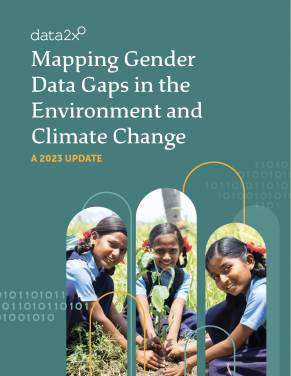Overview
Environmental factors may affect men and women differently, due to the varied behaviors and roles they play in many societies, as well as their distinct physiological characteristics. Whether one looks at energy, water, transport, urban design, agriculture, or consumption patterns, a gender lens is key to understanding differences in environmental impacts. For instance, women account for a large proportion of the more than four million deaths a year from indoor air pollution. Environmental degradation can also lead to increased gender-based violence. On the other hand, women’s economic, social, and political empowerment can help accelerate action on climate, environmental protection, and conservation. (OECD)
Key Questions
- What is the link between climate change and gender inequalities, and what social determinants further exacerbate these vulnerabilities?
- In what ways does financial inclusion for women and LGBTIQ+ individuals intersect with climate resilience, and how can access to financial services empower women to mitigate climate-related risks?
- What benefits can be gained from addressing gender-based violence and environmental degradation together?
- What role do women and LGBTIQ+ individuals play in environmental conflicts and climate solutions, and how does their representation in national parliaments influence climate policies?
- How can we understand the experiences of Women Environmental Defenders (WEDs) and the challenges they face in fighting against environmental injustices?
How Climate Change Amplifies Existing Inequalities
The consequences of climate change, including extreme weather events, exhibit differential effects on men and women, owing to deeply ingrained gender inequalities and societal gender norms. Women and LGBTIQ+ individuals frequently find themselves disproportionately impacted by adverse phenomena such as droughts, floods, wildfires, and hurricanes, leading to a ripple of social, financial, and economic consequences.
Because of climate change, women and LGBTIQ+ individuals face unique vulnerabilities and increased risks. This is due to the unequal power-sharing between women and LGBTIQ+ individuals, and men, the gender gap in access to education and employment opportunities, the unpaid care burden, the prevalence of gender-based violence, and all other forms of deep-rooted gender-based discrimination. However, they also play a crucial role as agents of change in mitigating and adapting to climate change.

Mapping Gender Data Gaps in the Environment and Climate Change
In this crucial report, Data2X updates its 2019 assessment of data gaps to emphasize the areas where progress has been achieved in addressing gender and environment data gaps, identify new gaps that have arisen with the increased attention to emerging issues, and provide information on the primary sources of gender and environment data.
“Compared to 2019, we now have more (though incomplete) data on women in environmental decision-making, women’s land ownership and security, and access to safe drinking water, sanitation, and hygiene (WASH). Other gender data gaps persist, and new ones have been identified in areas such as clean energy and climate-induced migration and displacement. There is also greater awareness and recognition of the ways that the environment and climate change impact gender equality issues such as sexual and reproductive health and rights, gender-based violence, and unpaid care work.”
Data2X & FemDev, 2023
Resources
Gendered Impacts of Climate Change: A Global Perspective on Experiences and Submissions
The 2022 report “Dimensions and examples of the gender-differentiated impacts of climate change, the role of women as agents of change and opportunities for women,” synthesizes information on the gender-differentiated impacts of climate change, the role of women and LGBTQIA+ individuals as agents of change, and opportunities for women and LGBTQIA+ individuals in the context of climate change.
Women, Gender Equality, and Climate Change Fact Sheet
In this fact sheet, we can see how climate change poses immediate threats. Women—often disproportionately affected due to their dependence on threatened natural resources and social barriers—are the ones developing gender-sensitive strategies. They are also essential agents of change, offering knowledge and expertise in mitigation and adaptation, making them valuable contributors to addressing climate challenges.
Sources
-
Crawford, K. (2021). The atlas of AI: Power, politics, and the planetary costs of artificial intelligence. Yale University Press.
-
Peña Ochoa. P. (2023). Tecnologías para un planeta en llamas. Paidós.
-
Data2X, Grantham, K., FemDev (2023). Mapping Gender Data Gaps in the Environment and Climate Change: A 2023 Update. Data2X. https://data2x.org/resource-center/2023-mapping-gender-data-gaps-environment-and-climate-change/
-
Le Tran, D., Martinez-Alier, J., Navas, G., & Mingorria, S. (2020). Gendered geographies of violence: a multiple case study analysis of murdered women environmental defenders. Journal of Political Ecology, 27(1), 1189-1212.
-
Notta, S., & Zetterli, P. (2023). BOLSTERING WOMEN’S CLIMATE RESILIENCE AND ADAPTATION.
-
Sloand, E., Killion, C., Gary, F. A., Dennis, B., Glass, N., Hassan, M., … & Callwood, G. B. (2015). Barriers and facilitators to engaging communities in gender-based violence prevention following a natural disaster. Journal of health care for the poor and underserved, 26(4), 1377.

